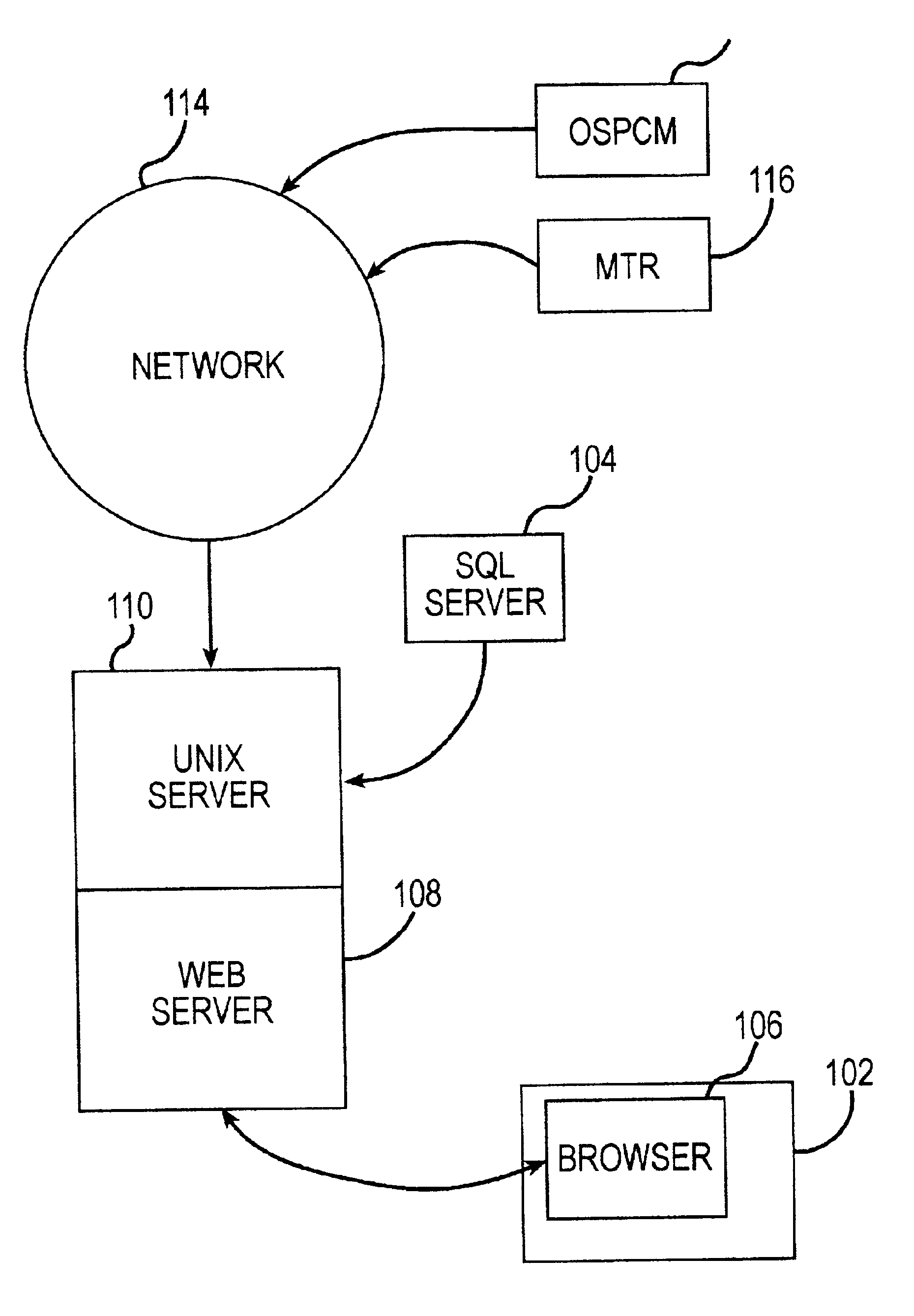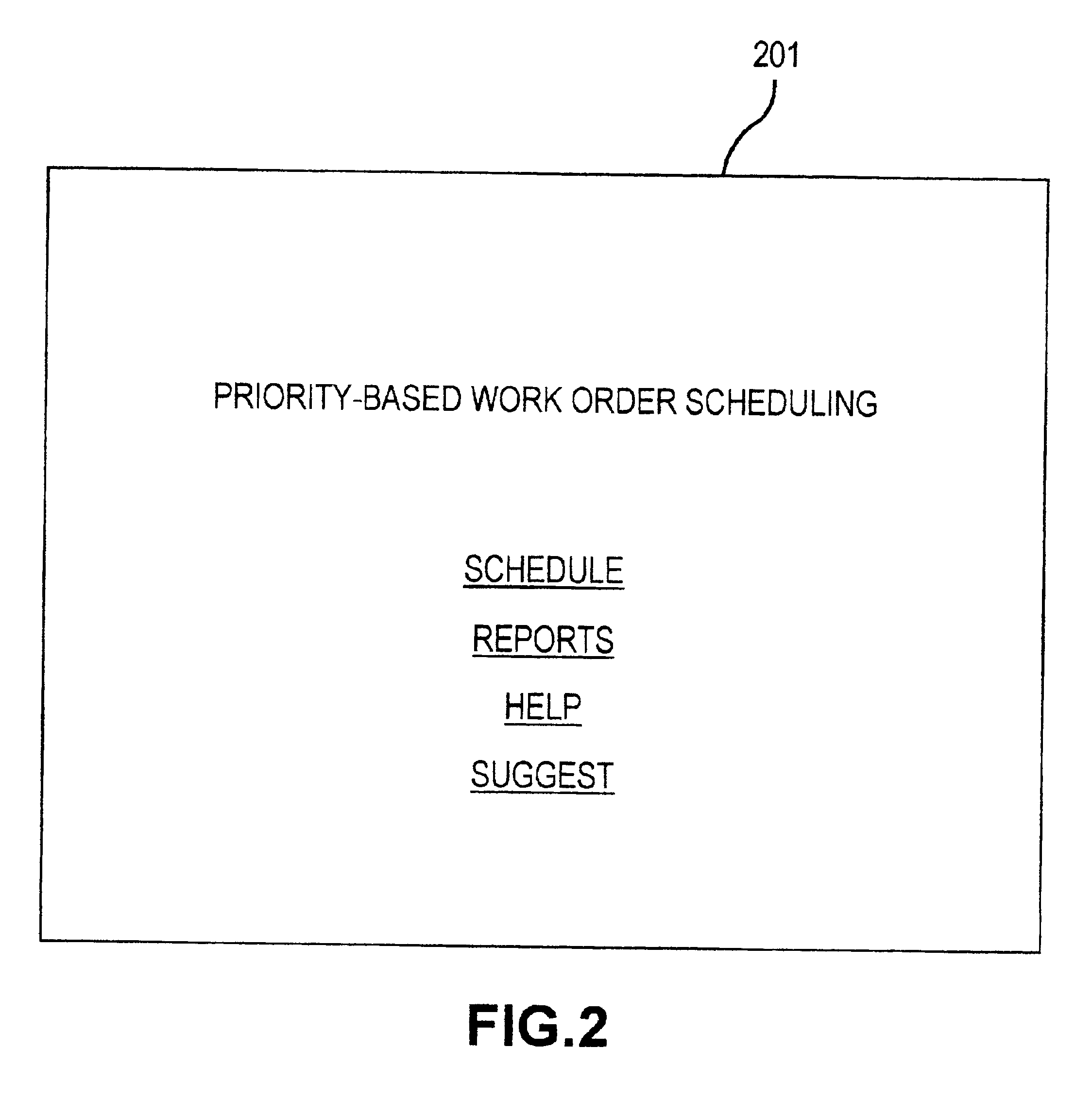System and method for priority-based work order scheduling
a priority-based work order and work order technology, applied in the field of computerized scheduling systems, can solve the problems of inefficiency of construction agents, scarce resources, and ineligibility of engineers for bonuses and/or reprimands,
- Summary
- Abstract
- Description
- Claims
- Application Information
AI Technical Summary
Benefits of technology
Problems solved by technology
Method used
Image
Examples
first embodiment
[0030]FIG. 1 is a schematic diagram of a system for priority-based work order scheduling according to the present invention. A user using computer 102 submits an information request to obtain information regarding current work orders. Preferably, the work order information is a stored on a database management system (DBMS) 104. DBMS 104 can be any database management system, for example, a SQL server. Preferably the user accesses the information using a web browser 106, which is coupled to DBMS 104 via a web server 108, and a Unix server 110 as shown in FIG. 1.
[0031]Web server 108 can be any web server. For example, it could be the well-known Apache web server. Preferably, web server 108 executes the PHP language. The PHP language is a web-based scripting language. The PHP language outputs HTML to communicate with web browser 106.
[0032]In operation, the user submits a work order information request using web browser 106. This request is sent to web server 108, which converts the req...
second embodiment
[0040]In the present invention, engineers are allowed to borrow priorities from one another. Thus, if an engineer has used up all of his or her allocated level 1 priorities, the engineer can negotiate with another engineer to borrow a level 1 priority. If the other engineer can loan the priority the loan is made. Incrementing and decrementing as described above are performed for the priorities of the two engineers. However, in this case, the system tracks the ownership of the priority. When a work order having the loaned priority level is completed for the engineer to whom the loan was made, the priority level of the table entry for the loaning engineer is incremented. Whether the other engineer can loan the priority can be determined by querying the priority table. Allowing borrowing, provides an alternative for engineers that have emergency situations arise.
[0041]The priorities can be seen via reporting described below. Thus, the present invention provides an ability to manage, up...
PUM
 Login to View More
Login to View More Abstract
Description
Claims
Application Information
 Login to View More
Login to View More - R&D
- Intellectual Property
- Life Sciences
- Materials
- Tech Scout
- Unparalleled Data Quality
- Higher Quality Content
- 60% Fewer Hallucinations
Browse by: Latest US Patents, China's latest patents, Technical Efficacy Thesaurus, Application Domain, Technology Topic, Popular Technical Reports.
© 2025 PatSnap. All rights reserved.Legal|Privacy policy|Modern Slavery Act Transparency Statement|Sitemap|About US| Contact US: help@patsnap.com



